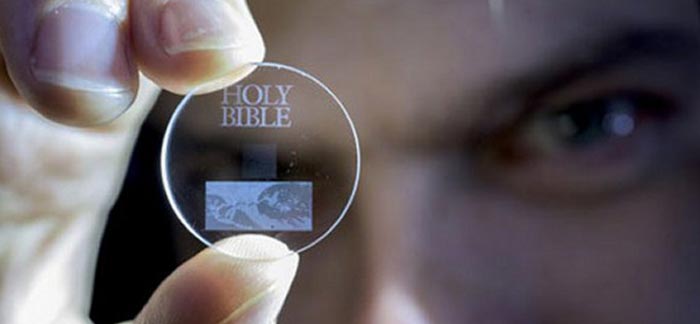Scientists working at the University of Southampton's Optoelectronics Research Centre (ORC) have made a breakthrough in digital data storage capacity and durability. Using quartz-based nanoglass 'coins' the scientists say it is possible to record and store up to 360TB of data, with a lifetime of approximately 13.8 billion years.
The technology behind this staggering data storage capacity and endurance feat is based upon the use of a 5D laser writer and the resulting 5D data nanostructures created in fused quartz. Back in 2013 the technology was first tested to be working and was used to write a humble 300kb text file in 5D. Now the ORC researchers have optimised the process to store up to 360TB on a coin sized quartz disc.

5D recordings are made using a femtosecond laser that emits extremely short and intense pulses of light. According to the Southampton University blog the file is written in three layers of nanostructured dots separated by five micrometres (five millionths of a metre). As you would expect of a 5D recording process, data is encoded in five dimensions - the size and orientation in addition to the three dimensional position of these nanostructures.
The touted stability and durability of the recordings is a "virtually unlimited lifetime at room temperature", in other metrics the discs showed thermal stability up to 1000°C and could endure for 13.8 billion years at 190°C.
"It is thrilling to think that we have created the technology to preserve documents and information and store it in space for future generations," said Professor Peter Kazansky, from the ORC. "This technology can secure the last evidence of our civilisation: all we’ve learnt will not be forgotten." Now the research team are looking for industry partners to commercialise their technology.
Now all we need is a research project aimed at guaranteeing there will be a suitable 'Domesday Player' that can access and understand these 360TB quartz discs in the year 13.8 billion AD.













